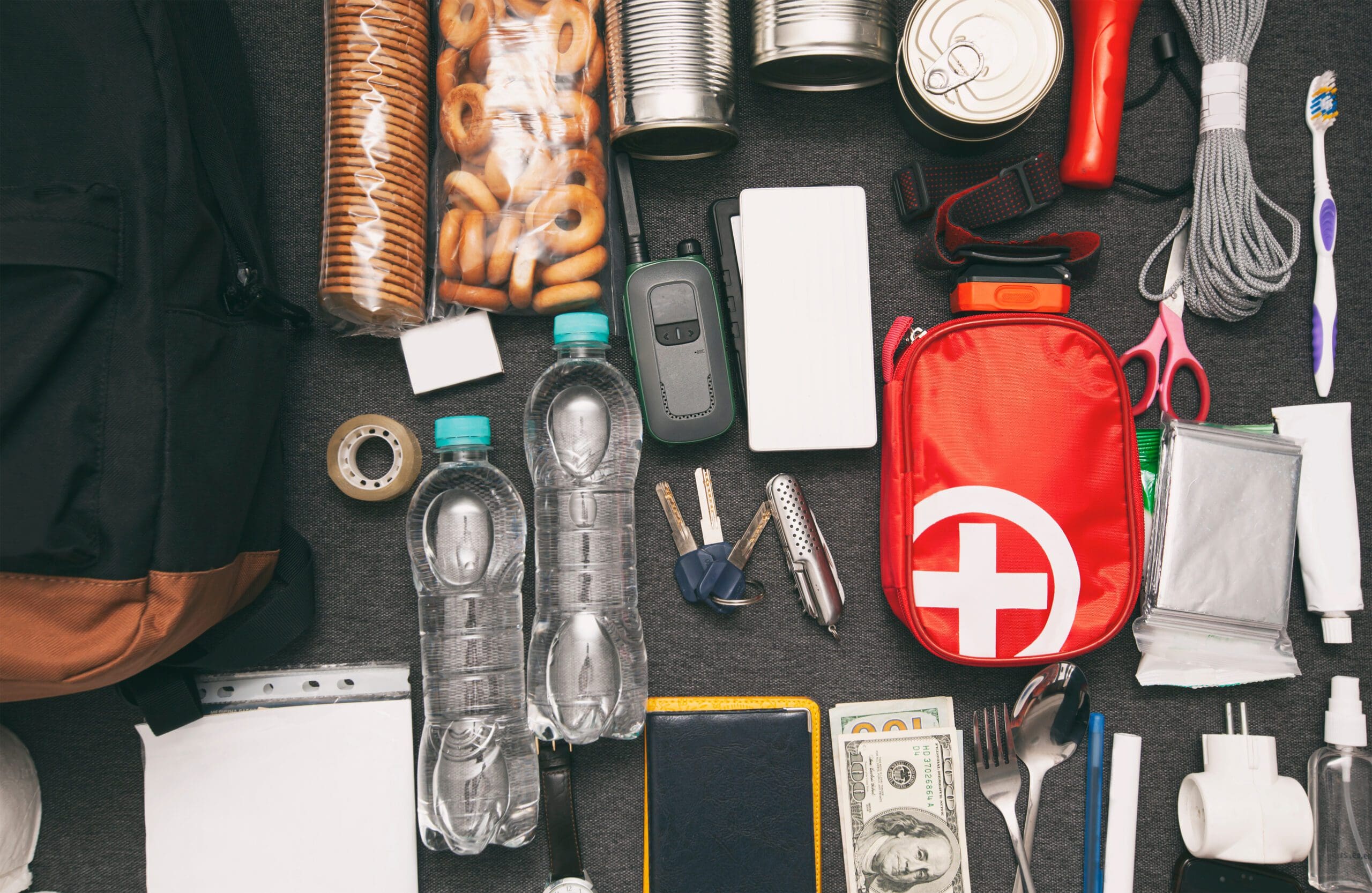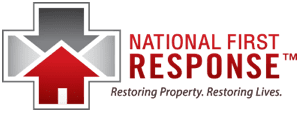Contact Us

How to Prepare an Emergency Kit for Any Disaster
A wise adage says: “Hope for the Best, Prepare for the Worst.” Although we hope for smooth days ahead, being prepared brings peace of mind. At National First Response, we encourage clients to create an emergency kit for readiness. No matter your home’s location or family size, taking simple steps to prepare for unexpected events could be lifesaving.
How to Build an Emergency Kit
The Red Cross advises people to keep a “go-bag” or emergency kit at the ready. Simply said, an emergency kit is a collection of everyday necessities that your family may require in an emergency. It should be portable, periodically re-stocked, and take into account the needs of anyone who might flee with you or shelter with you during an emergency. Place all of your emergency go kit’s components in one or two lightweight containers, such as a duffel bag, camping backpack, or plastic bin, and keep everything in sealed plastic bags.
Most disaster prep sites advise people to look around their homes to evaluate what they already have before purchasing supplies for their emergency pack. You might not have time to look for the materials you need or go shopping for them if you suddenly need to flee or take cover. Or worse – the stores might quickly sell out of essential supplies. Make sure you have enough of your food, water, and other supplies to survive for at least 72 hours.
Create several emergency kits
Unfortunately, you never know where you’ll be when an emergency arises. That is why it is prudent to prepare supplies for your house, place of employment, and vehicles in case of emergency:
HOME
- A minimum of three days’ worth of supplies for food, water, medicine, and other necessities should be included in your home emergency kit.
- Make sure everyone in the household is aware of the location of the go kit and keep it there.
- You might want to think about stocking up on supplies for a two-week shelter.
- To further safeguard you and your family from sickness, include products like face masks, hand sanitizer, and sanitizing wipes in your go kit.
WORK
You must be ready to stay at your place of employment for at least 24 hours. Make sure your emergency kit contains food, water, and other needs like medical supplies and medications. Additionally, if a long-distance evacuation is necessary, make sure you have a suitable pair of walking shoes on hand at work.
In case you need to be evacuated from your place of employment, your work go-pack should also be in one container and prepared to be “grabbed and gone.”
VEHICLE
Maintain an emergency kit in your vehicle just in case you become stranded. Every time the seasons change, update this. The following items ought to be included:
- Jumper cables
- Batteries and flashlights
- Face shields, hand sanitizer, sanitizing wipes, a first aid kit, and any necessary drugs
- Cans of fruit, a portable can opener, and foods high in protein like nuts and energy bars
- Water for each passenger and animal in your vehicle
- Sand or cat litter for greater tire traction
- Shovel
- Snow shovel if you live in or travel to cold climates
- Warm clothing, gloves, hats, boots, jackets, and an extra set of clothes are all recommended
- Sleeping bags or blankets
- Phone charger and fully charged cell phone
- Flares or a triangle of reflection
- Items required to suit the needs of everyone who might ride in your car, including infants and dogs
Keep your gas tank full to be ready for an emergency. If you become stuck, be safe by turning on your flashers, calling for assistance, and waiting until aid arrives.
Upkeep of your Go-Kits
Maintaining your resources so they are ready to use when needed is equally critical to assembling them. The following advice can help you ensure your emergency kit will be stocked properly when you need it most:
- Store canned food in a dry, cool place
- To prevent pests from getting into the food and to increase shelf life, store boxed food in firmly covered plastic or metal containers
- Any canned food that develops swelling, dents, or corrosion should be thrown out
- Consume food before it spoils, then swap it out for new supplies
- New objects should go in the back of the storage space, while older ones should go in the front
- Every six months, replace the food and water that has been saved. On all containers, be sure to write the date you stored them
- Every year, evaluate your requirements again and refresh your emergency kit as necessary
Water Advice
- Allow 1 gallon of water per person per day for drinking and personal care Include your pet’s water requirements in your calculations if you have any
- Maintain a minimum 3-day supply of water for each individual
- Children, women who are nursing, and people who are ill could require more water
- People who live in warm climates require extra water
- If you are aware of an impending emergency and have the opportunity, fill as many containers as you can, including bathtubs, with water
- As the last option, you can utilize the water from your water heater after filtering it through multiple layers of cotton (a t-shirt will work)
Food Advice
- Stock up on non-perishable food for no less than three days
- Pick meals that don’t need to be prepared or refrigerated and that can be cooked with little or no water
- Bring kitchen essentials including forks, knives, and spoons along with a manual can opener
- Avoid salty meals because doing so will make you thirstier
- Take into account the requirements of newborns, young children, seniors, and those with food allergies and dietary restrictions
Pick meals that your family will enjoy, such as:
- Canned fruits, vegetables, and meats that are ready to consume
- Fruit or protein bars
- Dry granola or cereal
- Almond butter
- Dried fruit
- Nuts or Crackers
- Canned juice
- Pasteurized non-perishable milk
- Energy bars
- Vitamins
- Baby food, if needed
Plan for Your Family’s Needs
Consider any family members who may require additional supplies or who may have allergies. Here are some things to consider:
For infants
- Formula, if necessary
- Diapers
- Bottles
- If necessary, spare breast pump parts and a car adapter
- If necessary, a manual breast pump
- Medications
- Baby Wipes
- Diaper Rash Ointment
- Immunization Records
Seniors
- Any equipment (wheelchairs, canes, and walkers) should be marked with a name and phone number
- List of prescription drugs, their dosages, and any allergies
- Include face masks and other equipment to protect the elderly from disease exposure
- Bring a spare pair of glasses, and if necessary, hearing aid batteries
- Include additional special items, such as wheelchair batteries
- Copies of Medicare and health insurance cards
- A printed list of medical professionals and emergency contacts
While we all hope disaster never strikes, being ready if it does can keep you one step ahead of the worst-case scenario. The good news is, whatever comes, you don’t have to face it alone. At National First Response, we are at the ready 24/7 to help you mitigate disaster or clean up following a crisis.
